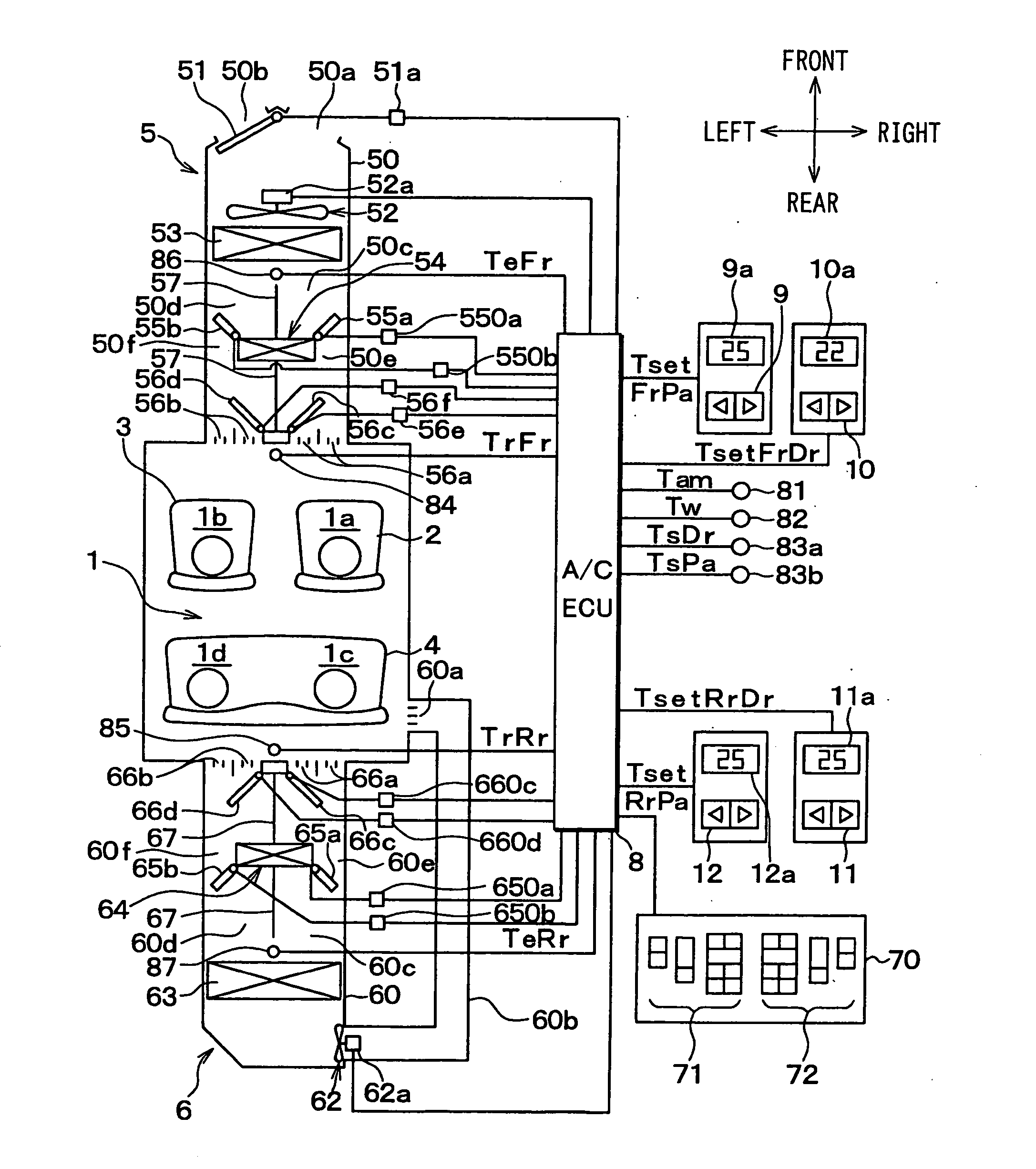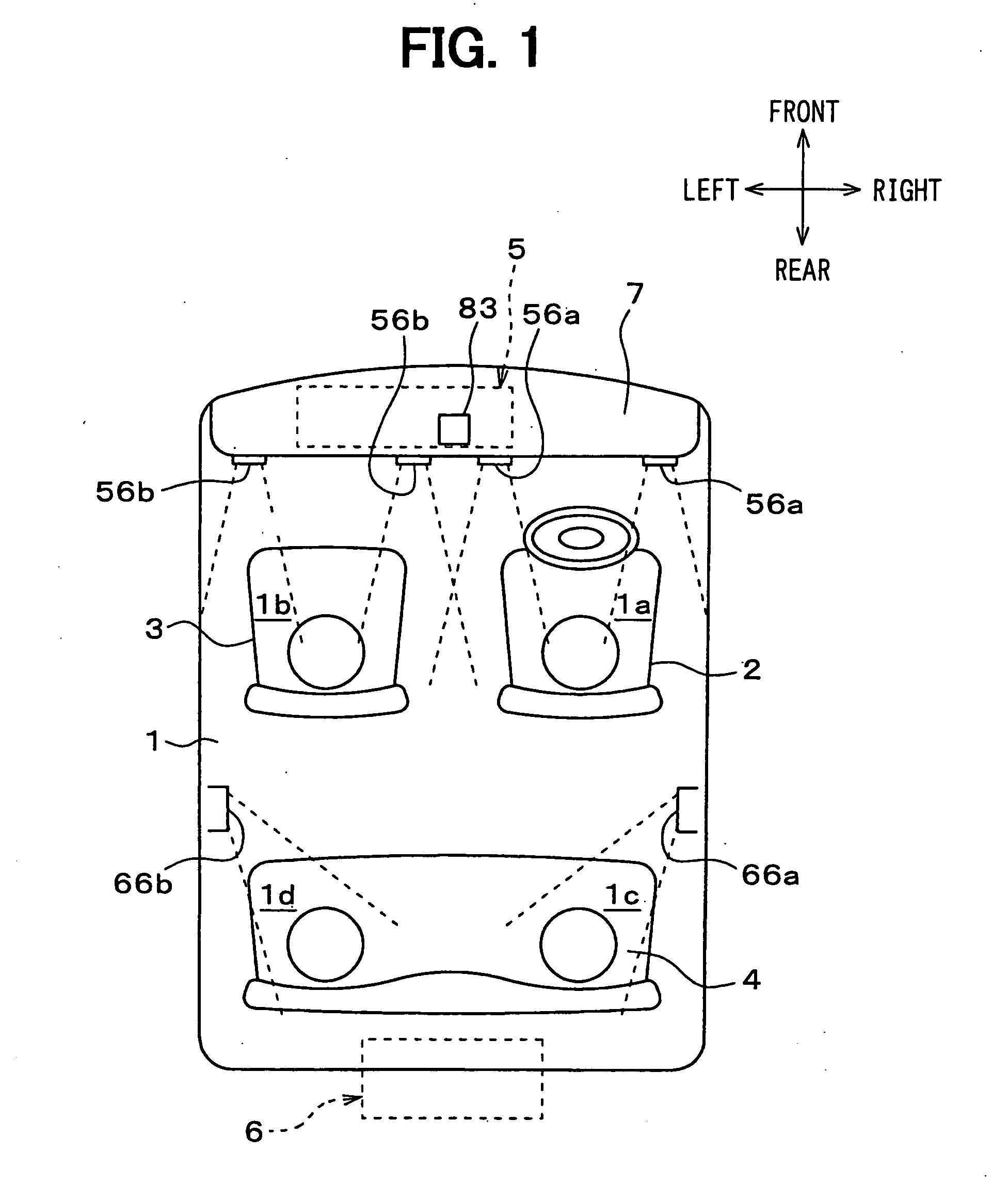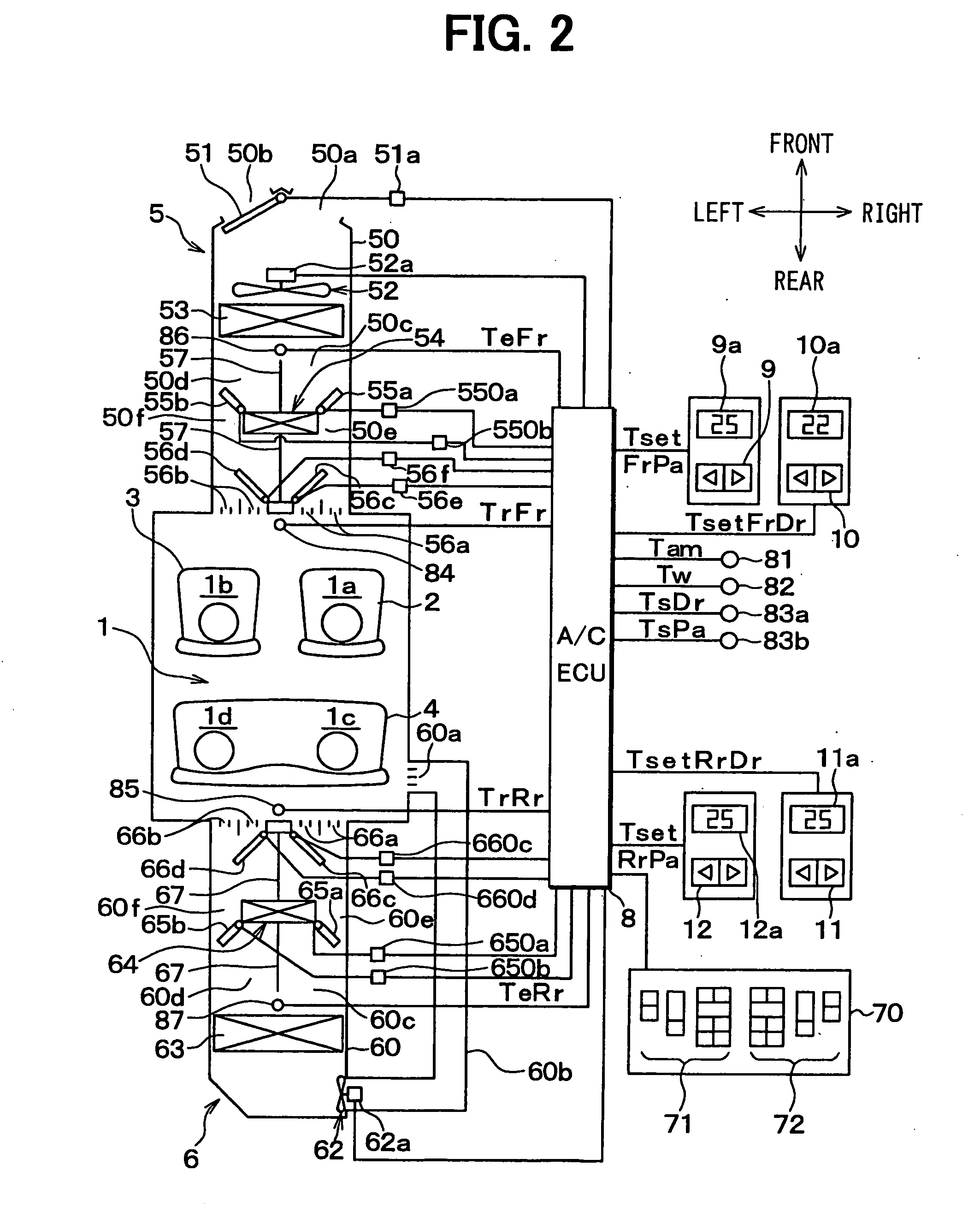Vehicle air conditioner
a technology for air conditioners and passenger compartments, applied in the direction of digital computer details, temperature control, optical radiation measurement, etc., can solve the problem that the air conditioning state in the passenger compartment cannot be normally controlled
- Summary
- Abstract
- Description
- Claims
- Application Information
AI Technical Summary
Benefits of technology
Problems solved by technology
Method used
Image
Examples
first embodiment
[0034] A first embodiment of the present invention will be now described with reference to FIGS. 1-10. In the first embodiment, a vehicle air conditioner independently controls each of air-conditioning operations of air conditioning zones 1a, 1b, 1c, 1d within a vehicle compartment interior (passenger compartment) 1. FIG. 1 is a schematic diagram showing the arrangement of the air conditioning zones 1a, 1b, 1c, 1d. The air conditioning zone 1a is located on a right-hand side in a front seat air conditioning zone. The air conditioning zone 1b is located on a left-hand side in the front seat air conditioning zone. The air conditioning zone 1c is located on a right-hand side in an air conditioning zone of a rear seat 4. The air conditioning zone 1d is located on a left-hand side in the air conditioning zone of the rear seat 4. The arrows of FIG. 1 show front, rear, left and right directions of the vehicle. FIGS. 1 and 2 show a vehicle state having a right steering wheel. Therefore, the...
second embodiment
[0154] In the above-described first embodiment, the target blowing-out temperature TAORrDrTR is calculated as the second air-conditioning control value based on the rear inside air temperature. In the second embodiment, a target blowing-out temperature is calculated as the second air-conditioning control value based on the passenger's clothes temperature referring to FIGS. 11, 12. In this case, the same control with that in the first embodiment will be simplified.
[0155] At first, control operation for calculating the rear right target blowing-out temperature TAORrDr is described referring to FIG. 11.
[0156] At step S200 in FIG. 11, similarly to the first embodiment, a rear right temperature TirRrDrs is calculated in accordance with the formula (5a) by using the rear right trim panel temperature TirINRrDr, the rear right window surface temperature TirWRrDr, the rear right passenger's clothes temperature TirCRrDr and the rear right passenger's skin temperature TirSRrDr.
TirRrDrs=0.3×...
third embodiment
[0179] According to the above-described first and second embodiments, the case is described in which an abnormal-temperature obstacle (e.g., ice cream or fired cigarette) exists between the non-contact temperature sensor 70 and a passenger in the passenger compartment.
[0180] In practice, obstacles having a room temperature such as a vanity mirror and a sun visor may exist between the non-contact temperature sensor 70 and the passenger. In this case, the skin temperature of the passenger and the like, which are used to calculate the target blowing-out temperatures TAORrDrIR and TAORrPaIR, cannot be accurately detected by the non-contact temperature sensor 70. If the air conditioning ECU 8 controls the rear seat air conditioning unit 6 according to the target blowing-out temperatures TAORrDrIR and TAORrPaIR, the air conditioning of the passenger compartment may be abnormally controlled.
[0181] In this embodiment, the target blowing-out temperatures TAORrDrIR and TAORrPaIR, which are ...
PUM
 Login to view more
Login to view more Abstract
Description
Claims
Application Information
 Login to view more
Login to view more - R&D Engineer
- R&D Manager
- IP Professional
- Industry Leading Data Capabilities
- Powerful AI technology
- Patent DNA Extraction
Browse by: Latest US Patents, China's latest patents, Technical Efficacy Thesaurus, Application Domain, Technology Topic.
© 2024 PatSnap. All rights reserved.Legal|Privacy policy|Modern Slavery Act Transparency Statement|Sitemap



